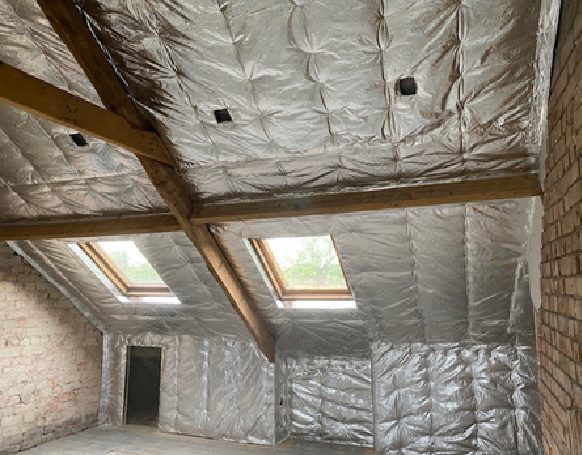Common Mistakes to Avoid When Installing Loft Insulation
Roof insulation plays a vital role in the energy efficiency and overall comfort of a building. It acts as a barrier against the elements, keeping warm air inside during the winter and preventing excessive heat gain during the summer. As a homeowner, it is important to note that poorly installed roof insulation can have detrimental effects on its performance and effectiveness.
While having no roof insulation at all may result in significant heat loss and gain, poorly installed insulation has its own set of consequences. Some of the key drawbacks of poorly installed roof insulation include:
Poor Energy Efficiency
Badly installed insulation reduces its ability to impede heat transfer, resulting in higher energy bills. The additional heat gain or loss can strain the building’s heating and cooling systems, leading to increased energy consumption.
Uncomfortable Living Conditions
Inadequate insulation can lead to uneven temperatures within the building, making the occupants uncomfortable. This can result in higher thermostat settings, increased reliance on artificial cooling or heating, and discomfort throughout the year.
Structural Damage
Over time, poorly installed insulation can cause structural damage to the building. Moisture buildup due to improper sealing can lead to rot and deterioration of the wooden framing, compromising the structural integrity of the building.
As you can see, installing loft insulation is an important home improvement task that can help save energy and money. However, it is essential to avoid some common mistakes to ensure the insulation is done properly. By avoiding these common mistakes when installing loft insulation, you can enjoy the full benefits of an insulated loft and maximise the return on your investment…
6 Common Mistakes to Avoid When Installing Loft Insulation
#1 Not Measuring the Loft Area Accurately
One of the most common mistakes people make when installing loft insulation is not accurately measuring the loft area. It is essential to carefully calculate the square footage of the loft to ensure sufficient insulation material is used. Failure to do so can result in inadequate insulation coverage and less effective insulation.

#2 Incorrect Measurement of the Insulation Thickness
Another common mistake is measuring the thickness of the insulation incorrectly. It is important to refer to the manufacturer’s instructions or the industry standards to determine the appropriate thickness of the insulation material. Incorrect measurements can lead to gaps or insufficient insulation, reducing the insulation’s effectiveness.
#3 Ignoring Ventilation Requirements
Proper ventilation is essential for maintaining a healthy and comfortable living environment. When installing loft insulation, it is important to consider ventilation requirements. Failing to provide adequate ventilation can lead to condensation problems, moisture damage, and air quality issues. Proper ventilation will help maintain a balanced airflow within the loft space.
#4 Not checking the Roof Structure
Before installing loft insulation, it is essential to check if your roof structure is stable and in good condition. Ignoring potential issues can lead to structural problems later on. Ensure that your roof is in good condition and can withstand the additional weight of insulation material. If you have any doubts – check out our EcoPro Loft Ceiling Insulation Kit before you start on your loft insulation project.
#5 Improper Installation Technique
Installing loft insulation requires attention to detail and proper technique. Mistakes such as uneven spacing, gaps, or loose-fitting insulation can compromise its effectiveness. It is important to follow the manufacturer’s instructions or seek assistance from a professional to ensure a well-insulated loft space. But you will find all you need in our Loft Floor Insulation Kit.
#6 Ignoring Fire Safety and Building Regulations
While loft insulation can improve energy efficiency, it is also important to prioritise fire safety. Make sure to adhere to building regulations when installing insulation and ensure that it does not hinder escape routes or obstruct fire detectors. Make it your priority to take the necessary precautions to ensure the safety of your home and family – our YBS Superquilt is the ideal product to make sure you tick all the regulatory boxes.
Conclusion
By avoiding these common mistakes, you can ensure that your loft insulation is installed correctly and efficiently. Remember, proper insulation not only saves energy and money but also contributes to a more comfortable and sustainable living environment. While having no roof insulation at all is a significant drawback, poorly installed insulation has its own set of issues. Energy inefficiency, discomfort, and potential structural problems are some of the consequences of poorly installed insulation. It is crucial to ensure that roof insulation is installed correctly by experienced professionals to ensure optimal energy efficiency and comfort in the built space.